To cuff or not to cuff? That has been a question men had to answer for over a century or so as cuffs became a regular option for trousers. If you look around on the street, most men wearing long pants are opting for a straight hem without a cuff, but this wasn’t always the case. For example, during the Golden Era of Menswear in the 1930s, most men would opt for a pair of cuffs or turnups on their everyday pants.
Back then, straight hems were reserved for more formal ensembles, such as evening wear or formal morning wear. The de facto choice of cuffs for everyday normal wear started to disappear by the 1960s. Much like pleats, cuffs now have gone in and out of fashion; however, they have never regained their prominence. Why is that?
That’s the question we’re here to answer, especially because, as you might guess, we are big fans of cuffs.
History of Cuffs & Turnups
The First Cuffed Garments
Before we can fully understand why men stopped wearing cuffs, it pays to understand why we started wearing them in the first place. The idea of adding cuffs to the bottom half of your outfit has been something that men have been doing since Medieval Times.
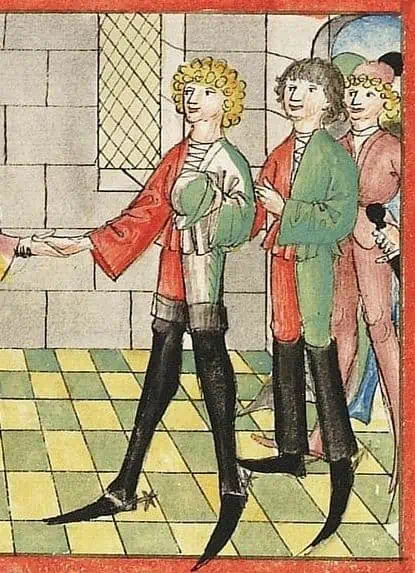
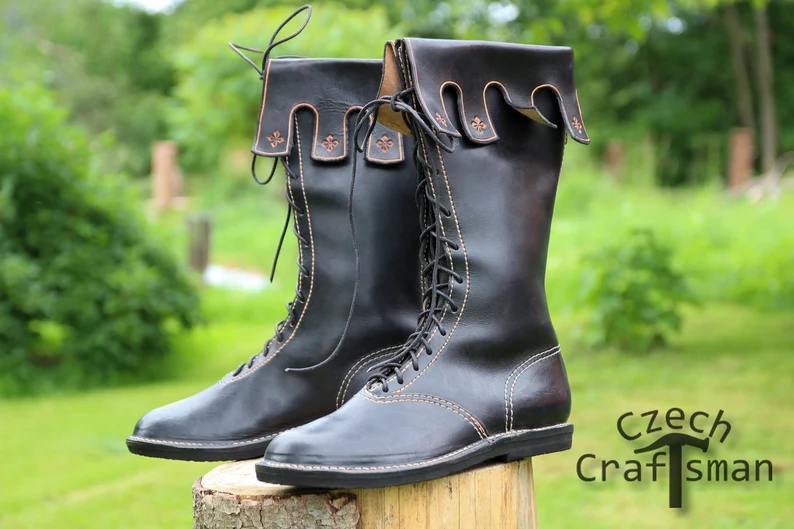
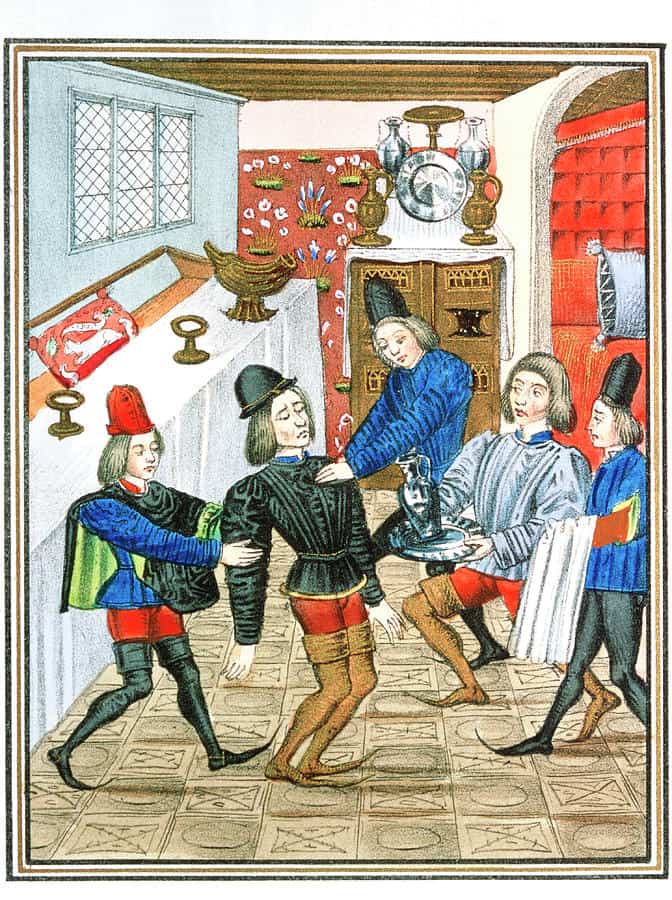
Interestingly, it started with footwear, not pants. Many popular riding boot styles at the time added cuffs or cuff-like elements to give their boots more weight and for decorative effect. Frankly, some of them were even more cuffed than boots.
Cuffed Trousers in the 19th Century
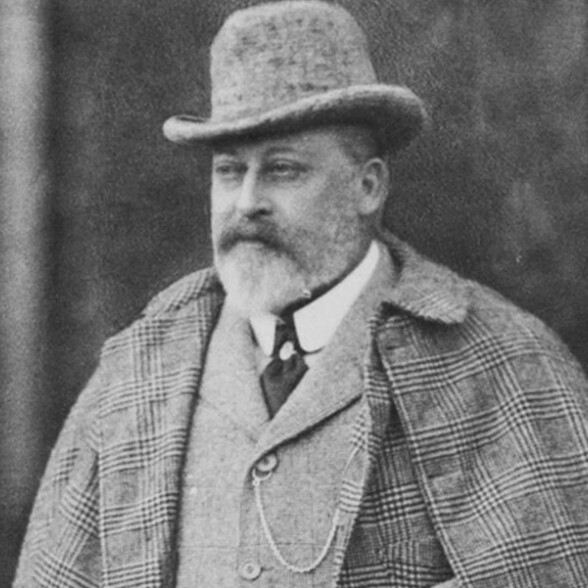
The 1890s and turnups
King Edward VII
Cuffs weren’t really seen on pants until the 1890s. King Edward VII is often credited for having invented or at least popularized the trend of adding turnups or cuffs to trousers or pants. The monarch wanted a pair of trousers that he could wear on a typical, bad-weather English day in rural areas.
At times, British men would often roll up their pant legs on quintessentially bad weather, English days. The reason they did this was to avoid getting mud on their pants, so they could avoid having to wash prematurely.
So, Edward VII, king of England and noted tastemaker, decided to have his trousers tailored in a way where they were pre-rolled and permanently attached.
As Edward was seen wearing his pants in this way, others followed suit and started to wear pants in that fashion.
The added benefit of adding decorative cuffs was that the extra weight resulted in a cleaner drape because the extra weight at the bottom of the pants would pull them down more neatly, giving the trousers a more pleasing appearance.
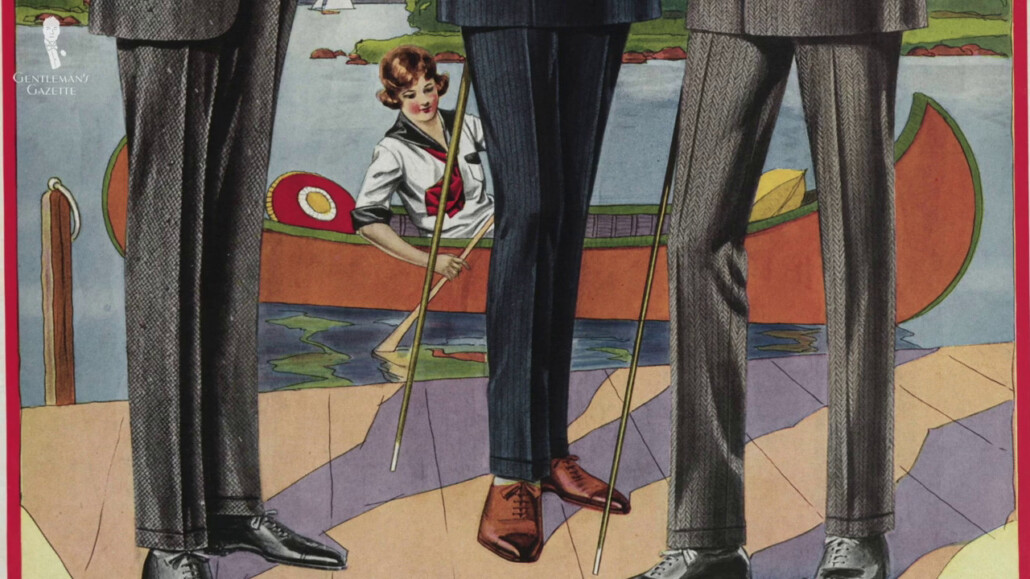
Cuffed Trousers in the 20th Century
By the time the 20th century rolled around, cuffs had become the standard for men on their pants. In the early 1900s, a man by the name of Louis Freeman had a patent whereby a hole in the cuff was supposed to prevent the cuff from collecting dust and debris. Obviously, this patented invention never really caught on, and today, most people do not have a hole in their cuff.
Who knew men were so passionate about keeping the inside of their cuffs clean? Also, it’s ironic that something that was designed to prevent the pants from getting dirty now is actually collecting dirt. Of course, another way to get around that would be to just close the hem by sewing it shut.
Cuffed Trousers During the Golden Age of Menswear
Despite cuff’s widespread popularity in the 1920s and 1930s, they were subject to rationing during World War II. However, unlike other victims like the double-breasted suit or the three-piece suit, which noticeably lost in popularity after World War II, the cuffs made a comeback after the war.
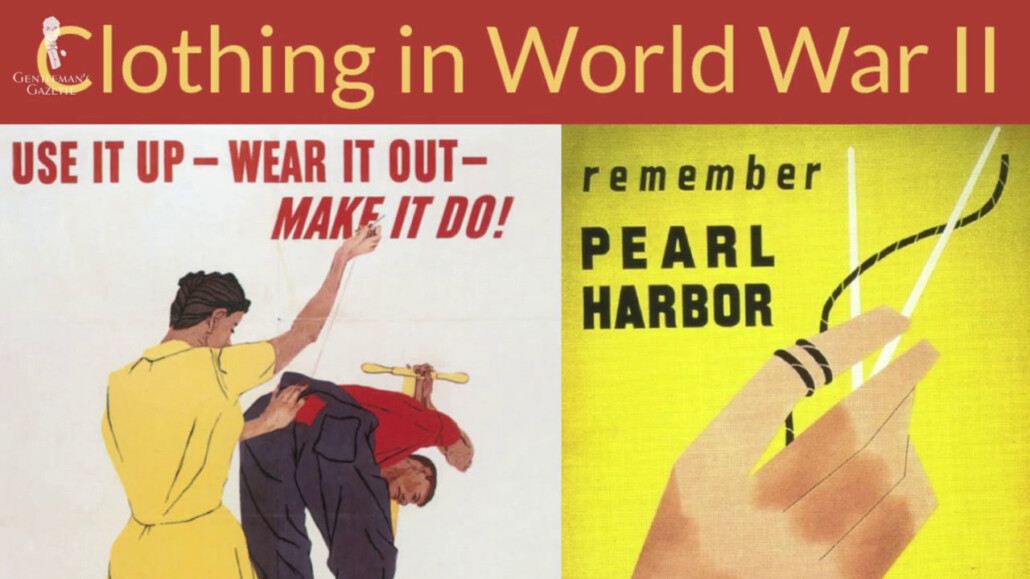
Looking back, you can even see trendy men like Marlon Brando cuffing his jeans. So, you can see cuffing was something that was popular even with a more casual style. Despite their propensity to resist what was popular with older people, most young people at the time didn’t actively rebel against cuffs.
Cuffed Trousers Fall Out of Favor during the 1960s
However, by the 1960s, cuffs had lost some steam. The slim fit style of the Mod Era was not conducive to wearing turn-ups. The extra bulk of the traditionally sized cuff just looked off and unbalanced on an otherwise very slim silhouette.
By the 1980s, cuffs seemed to have officially lost their foothold in society. Some might say, “Wait a second, what about the 80s Yuppie style, which had cuffs as part of their outfits?” Well, it was just that; it was a small trend and, frankly, it was only associated with the stuffiness and associated stereotypes of that era.
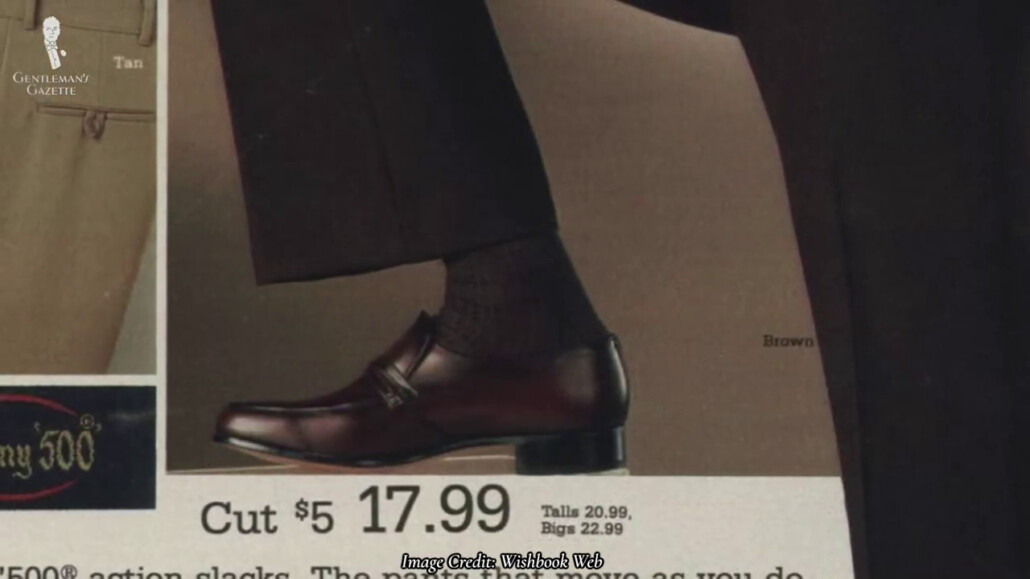
You might say, “My grandpa, my husband, my boyfriend, they all still wear cuffs,” and you’re right! Cuffs never disappeared completely; however, if you go to a mall today, you go to a store, you look around yourself, chances are less than five percent of men are going to wear cuffs.
Why Men Stopped Wearing Cuffed Trousers
1. Dated Appearance
One of the primary reasons men stopped wearing cuffed trousers is the perception, in many men’s minds, that it has a somewhat dated appearance. Because they were popular several decades ago, a lot of men associate the style with their grandpas of yesteryear.
They also share a somewhat symbiotic relationship with pleats, which also have fallen out of favor as of late. But, there seems to be something of a resurgence of pleats, so we might also see a resurgence of cuffs.
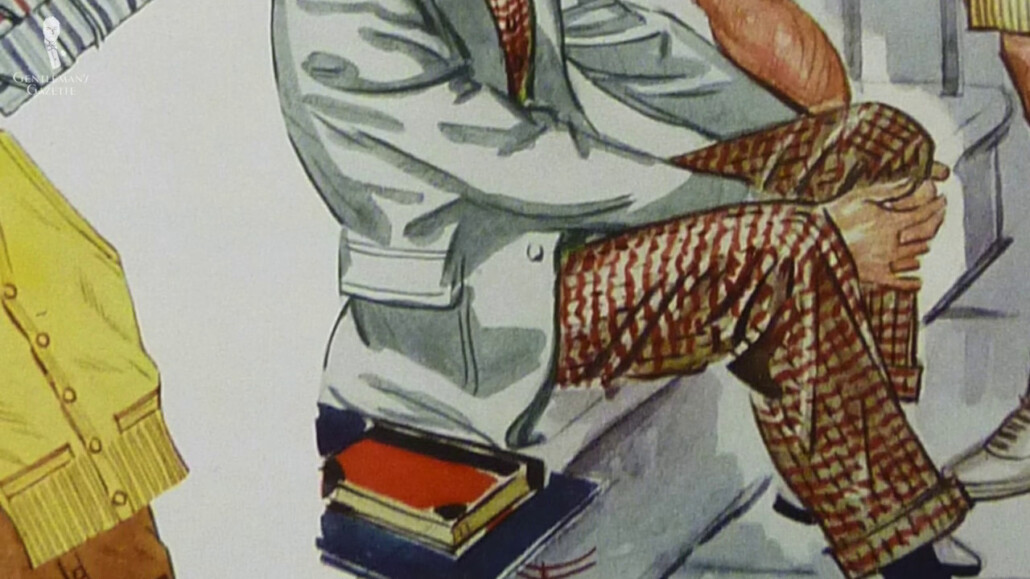
So, the everyday man who’s not interested in classic style or even fashion will likely opt to go without cuffs. That being said, if you attend the immensely popular menswear event known as Pitti Uomo, you’ll see tons of cuffed pants and everyone who’s interested in tailored clothing as well will usually be a big fan of cuffs. It’s almost like the subset of well-dressed men embraces cuffs because it separates them from the rest.
When faced with some of the high fashion stylings of bold pleats and waistbands on modern trousers, it’s always important to keep one thing in mind: the fit of the pants really determines if something looks good and flattering or not.
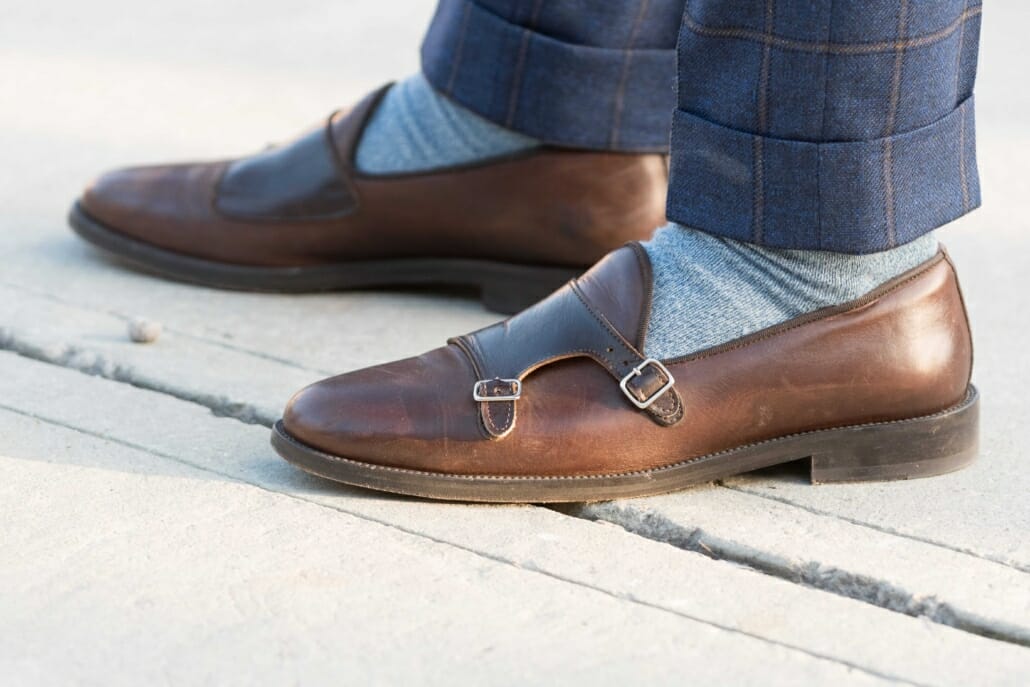
A cuff can just be an element of that, and details like cuffs or pleats are not something that just belongs to one era but can be incorporated into your personal style.
Learn 10 ways vintage men simply dressed better
2. Perceived Proportionality
The second reason cuffs have fallen out of favor is their perceived proportionality. You’ll often hear it thrown around that only tall, long-limbed men are able to pull off cuffs.
The theory goes that it helps to balance your height by adding cuffs, which make your legs look somewhat shorter. This means that if you are not a tall man, you may be afraid of looking shorter than you are; however, this generalization is not really true. What it comes down to is proportion.
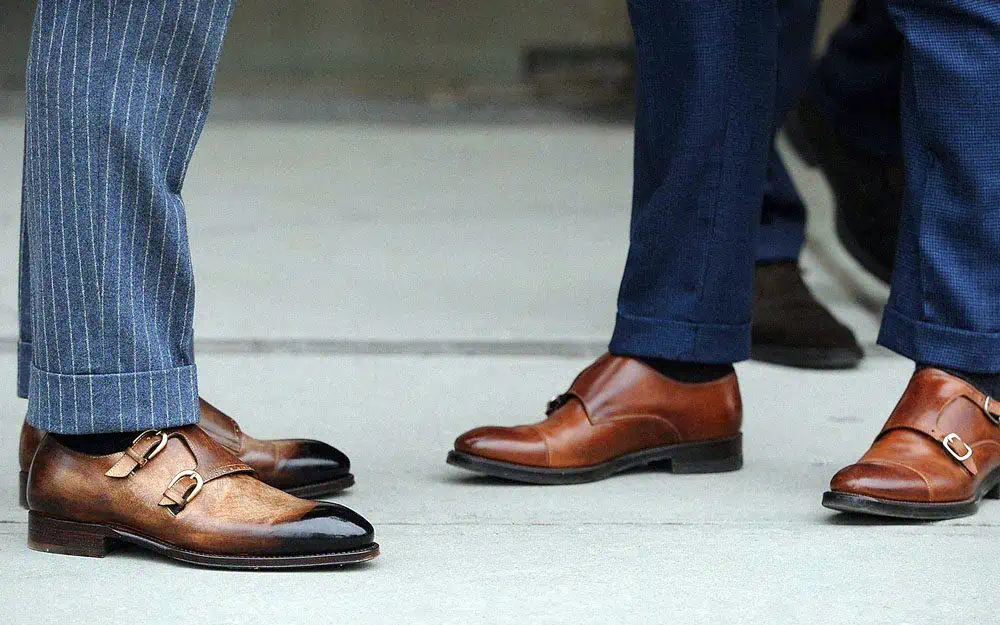
For example, a two-and-a-half-inch cuff or six centimeters may seem disproportionate for a person who is just five-six or 168 centimeters or shorter. However, a cuff of maybe one-and-a-half inches or roughly four centimeters may look much more proportional. It’s all about finding the right proportions that work well with the fullness of your pants and the style you’re going for.
See how clothes can make you seem taller and leaner
3. Styling Confusion
The third reason cuffs have fallen out of favor is styling confusion. Because you have to be actively interested in clothing to even understand the concept of cuffs, it may be something outside of the comfort zone for many men.
Cuffs might seem too complicated or fussy to bother with. After all, you don’t just have to simply choose “cuff or no cuff,” because if you go with a cuff, you also must decide whether you want two and a half inches, two inches, one and three quarters, one and five-eighths, and so forth.
The trouser cut also matters. If you have very slim pants, having a cuff that is too long can look odd and puddly.
There is also the issue of how to determine the proper length and break with cuffed trousers. How much sock should you show? Should it cover your feet?
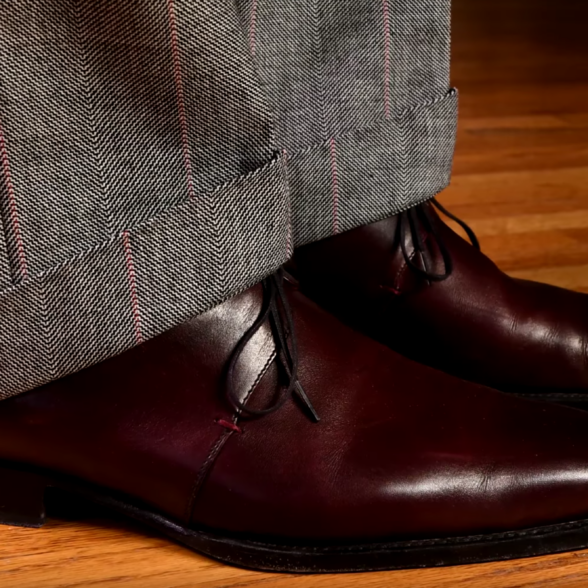
Should you wear an
Angled Cuff?
A more advanced alterations tailor can give you a slightly angled cuff so it hits the bottom of the shoe in the back but still reveals everything in the front. Now, while regular cuffs are reversible and can be taken out and put back on, you can’t do that with angled cuffs because they’re not real cuffs but separately cut pieces that are then attached to one another.

To understand if you should opt for some break or no break or how to find the right balance for your style, check out our dedicated guide to that topic.
Determine your ideal break and length for trousers!
4. Confusing Formality
The fourth reason cuffs are falling out of favor is because they’re perceived as being innately formal even though, back in the day, they were considered to be innately casual. As mentioned before, historically, cuffs were utilized by people in rural areas – in the countryside by peasants and by farmers. So, naturally, it was something that was not for the man about town.
Because of that, to this day, you won’t see cuffs on formal wear like a tuxedo, a White Tie ensemble, a stroller suit, or a morning wear ensemble. At least, not if the person wearing it has read the Gentleman’s Gazette style guides.
So, if cuffed pants were more casual, and today, we live in a world that is increasingly more casual, why is it then that not more men wear cuffs? Honestly, most men on the street today associate a cuff or a turnup with something that’s worn with dress pants or a suit, so to them, it’s something that’s much more formal. After all, sweatpants don’t have cuffs, do they?
Also, if you’re into the minimalist approach, we can see how no cuffs jive more with your style.
Back in the day, maybe someone would have noticed if you had worn a suit in the evening with cuffs as that being slightly out of place. Today, if you wear a suit of any kind, you will be so much more formally dressed than most people around you that no one would even know this kind of old-school rule.
What style “rules” can you ignore?
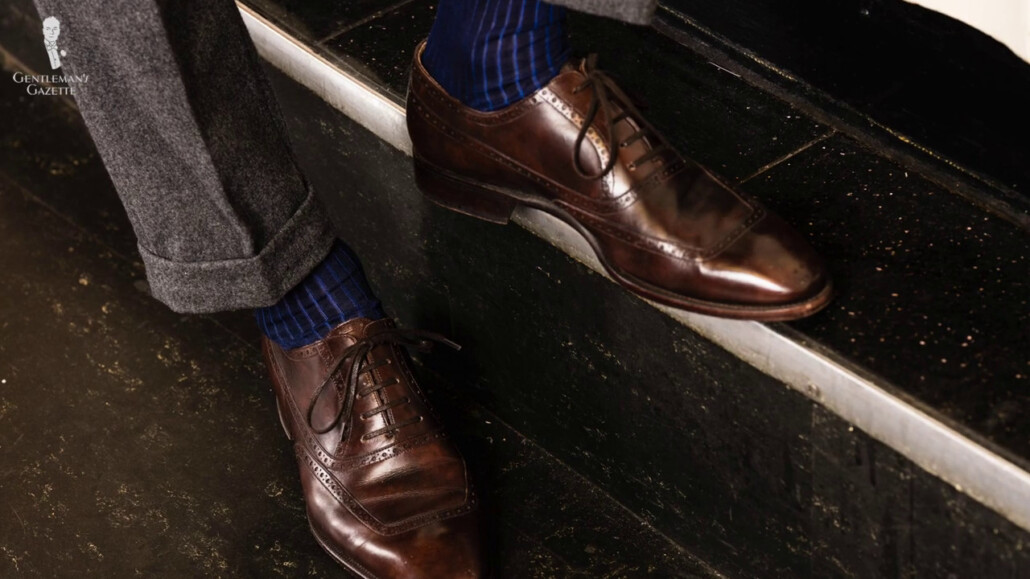
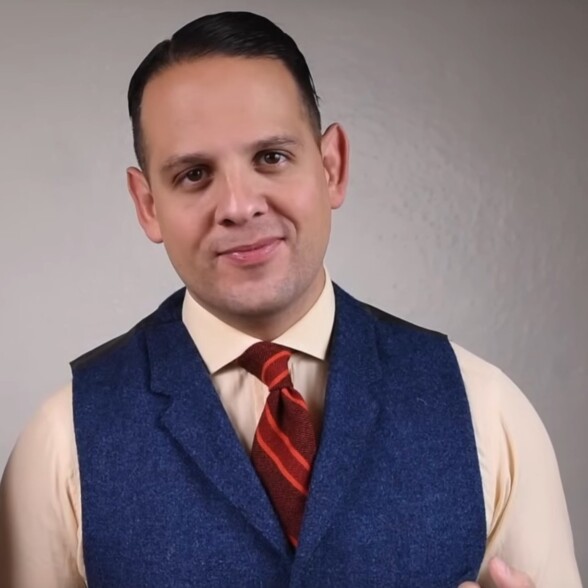
“Why I love Cuffed Trousers”
By Raphael
- Because many men don’t wear cuffs and don’t know how to wear them, they can be a subtle style hallmark on your everyday pants
- The extra weight provides a better-looking drape, especially when walking.
- Trousers are less likely to get stuck to socks
5. Bulkier Silhouette
The fifth reason cuffs have fallen out of favor is because they have a bulkier silhouette. Now, in recent years, slim fit has dominated the menswear landscape, and if you wear skinny tight jeans, having a bulky cuff just doesn’t seem very balanced.
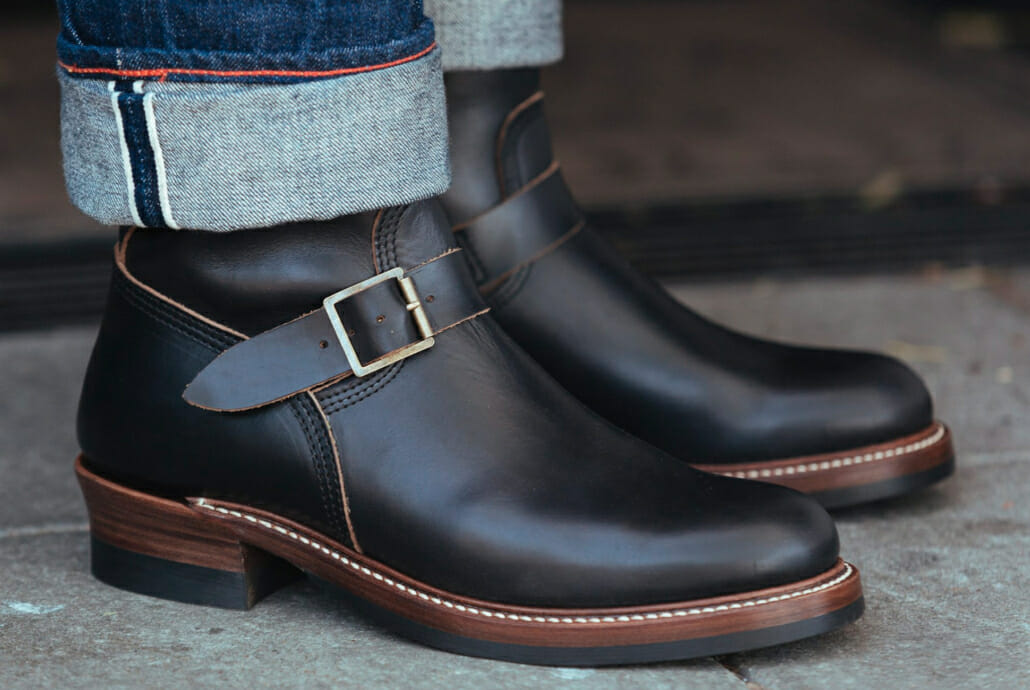
That’s not to say that cuffs can never work on slimmer pants because they definitely can. It just has to be the right proportion, so keep balance in mind and be aware of the size of the leg opening, the visual weight of the employed fabric, and the cut of the pants themselves.
6. Cost
Last but not least, one of the most simple but also logical reasons is that costs had something to do with the disappearance of cuffs. If you think about it at a very basic level, cuffs require more fabric and more workmanship, therefore costing more money, which is then passed onto the consumer.
More clothing brands today are exclusively bottom-line focused, so eliminating cuffs is an easy way to save money, especially if customers are not asking for them.
This doesn’t mean that all manufacturers are bad: there are many pitfalls associated with making cuffed trousers on a massive scale.
Let’s say, the original manufacturer decided to offer a cuffed pair of pants.
Having made that decision, they now have to define what size the cuff would be. So, maybe some people would not like the two inches – they’d prefer a one-inch – and some people say, “Oh, I hate the one-inch. I want a two and a half inches.” So, your market shrinks immediately.
True, you can undo and change a well-made cuff, but that requires more work for the consumers, while makers know that if a person truly wants cuffs, they can just buy a longer straight hem and have the cuff added at the alterations tailor.

So, for companies, it is a safer, much less costly bet that can still accommodate people who like cuffs to offer cuffless pants.
Conclusion
In a nutshell, just because cuffs are currently not popular doesn’t mean they can’t work for you and your style. In fact, many here at Gentleman’s Gazette prefer a cuffed pair of pants for everyday wear.
Personally, Raphael likes a two-inch cuff. In the past, he had two-and-a-half, sometimes two-and-three-quarter inches of a cuff, and it always elicited lots of comments on YouTube. He likes the way they feel when he walks, he likes the way they look, and he also enjoys that it’s an item that not every man on the street wears, too.
Of course,he does not wear them on his formal ensembles, and there was a time when he had all the cuffs removed on certain pants because he felt it was more formal and more proper.
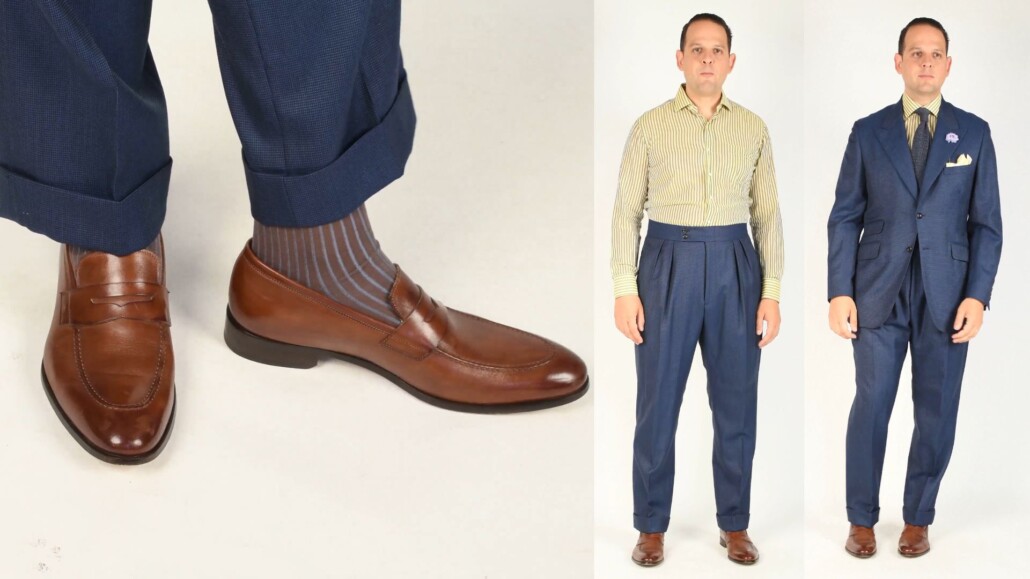
At the end of the day, there’s no right or wrong; there’s just what works for you: just don’t feel intimidated by cuffs or feel like you can’t wear it without looking like a grandpa.
What’s your take on cuffs? How high do you wear them, or how small? Do you not wear them at all? Please share with us in the comments.
FAQs
Why were pant legs first cuffed?
King Edward VII is credited with popularizing cuffed pants in menswear during the 1890s because he wanted a pair of pants that could be worn on rainy days.
Are cuffed pants old-fashioned?
While cuffed pants aren’t necessarily “old fashioned,” they are a more traditional style that currently isn’t trendy or as widely seen in the mainstream. They can still easily be introduced, however, into both contemporary and Classic styles.
When were cuffed pants first popular?
Cuffed pants grew in popularity during the early 1900s, as others copied the style of King Edward VII.
Are cuffed pants formal or casual?
Cuffed pants are more casual, as they have a rural heritage and were designed to work best in dirty environments.
What types of pants are best to have cuffed?
You’ll often see dress pants, chinos, and sometimes even jeans cuffed.
Are there any pants that should not be cuffed?
Pants that have an extremely slim silhouette often won’t look their best with a cuff, and trousers worn on formal occasions, according to the conventions of Classic Style, should not be cuffed.
What shoes look best with cuffed pants?
Assuming that the trousers and the footwear are consummate relative to formality, cuffed pants can look great with boots, sneakers, dress shoes, and even casual shoes.
Are cuffed pants a trend?
Cuffed pants come in and out of fashion but are a timeless style when worn at the proper proportions.
Are cuffed pants more expensive?
Cuffed pants are slightly more expensive due to the extra fabric needed to make them, but the price is fairly negligible over the long run.
What is the right way to have pants cuffed?
There are many different ways a pair of pants can be cuffed, and there isn’t one single “right way” to do it. It all comes down to the preferences of the wearer.
What kind of body type do cuffed pants flatter?
While it’s often said that cuffs look best on tall and thin men, the truth is that any body type can wear cuffs well if they’re proportionate to their features.
Do only old men wear cuffed pants?
While cuffs were more popular in older eras, anyone can wear cuffs well today, not just older men.
Outfit Rundown
So, in today’s outfit, I’m, of course, wearing a cuffed pair of pants. It’s a single-pleated prototype from Fort Belvedere. It has a full cut and a true high-rise that is above my belly button. It’s inspired by the 1930s, and even more so than cuffs, I like the high-rise because it makes for a much more comfortable trouser, and it also has an elongating effect on the silhouette.
Even people in the street who don’t know what I wear will often compliment me and say, “Wow! These are sharp-looking pants,” without knowing why they like them. Maybe it’s the cuffs, maybe it’s the high-rise, maybe it’s the way they drape – I can’t pinpoint it, but there’s definitely something about it.
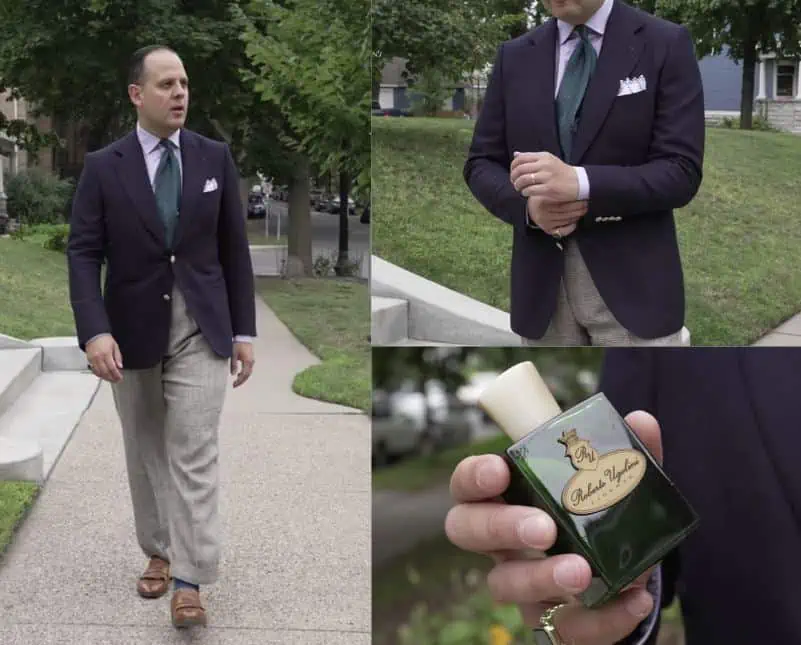
My jacket is a prototype blazer from Fort Belvedere with some gold buttons. My shirt is finely striped in white and blue from Eton. My green, blue, and dark yellow tie; my white and blue, hand-rolled pocket square; as well as my shadow-striped socks, are from Fort Belvedere, and you can find them in our shop here.
My shoes are kilty penny loafers from Stuart’s Choice that were made in England. My pinky ring is a new acquisition from Berlin, Germany. I bought it at the flea market, and it’s made of yellow gold with a nice cream tourmaline.
Today’s fragrance is the Roberto Ugolini Loafer, which comes in this green bottle, and I’m wearing loafers, so I thought this was a really good scent.
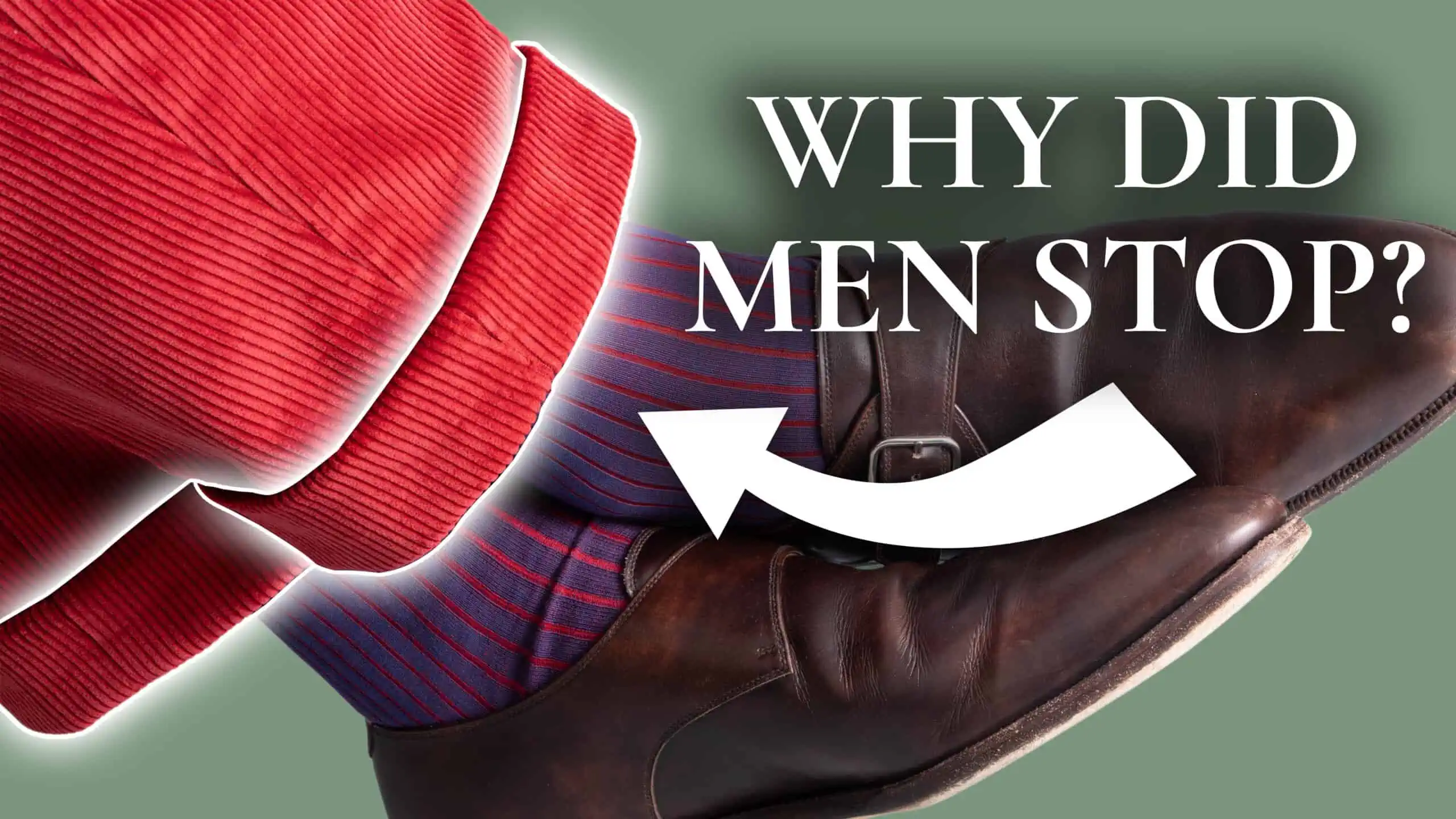
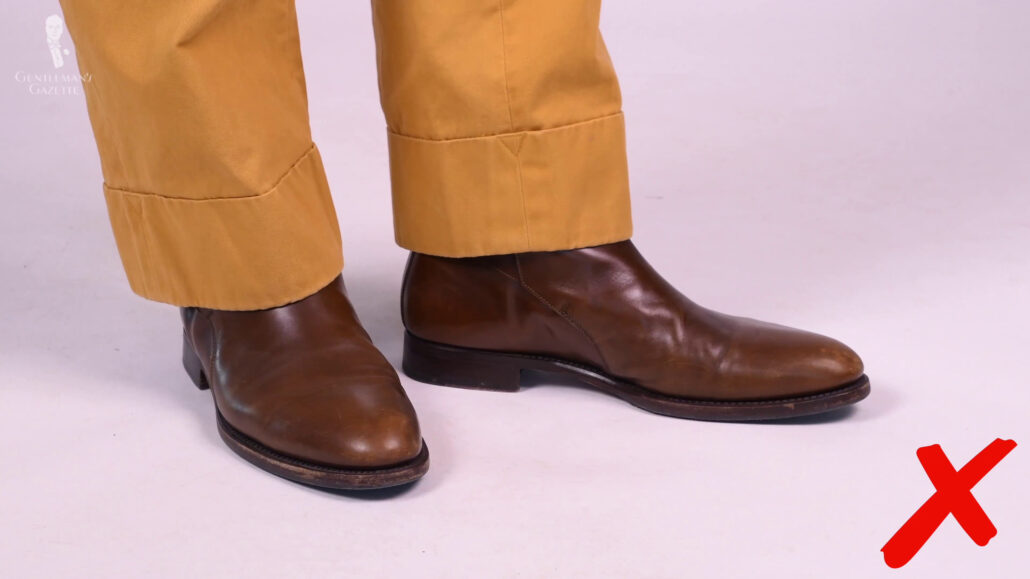
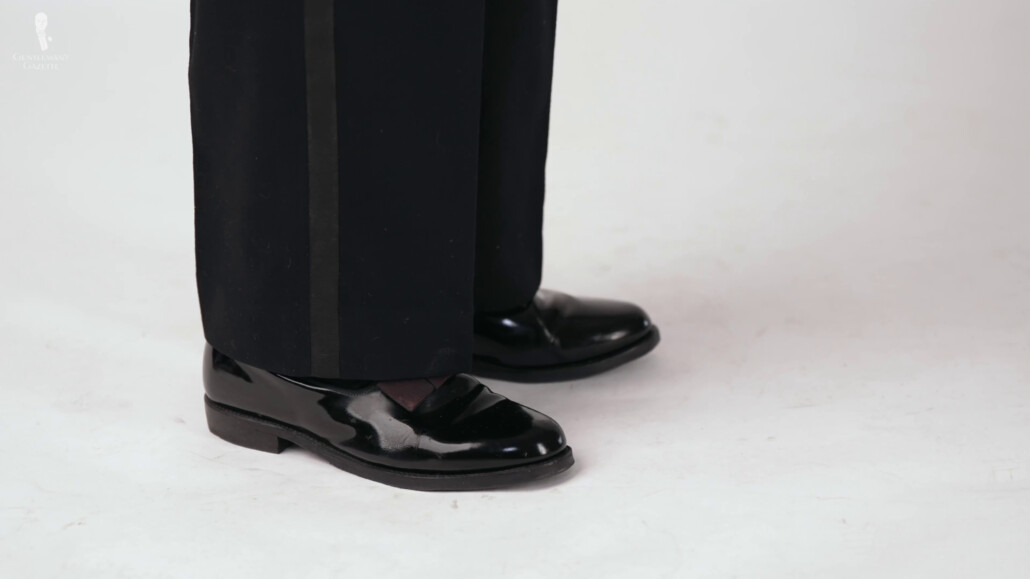
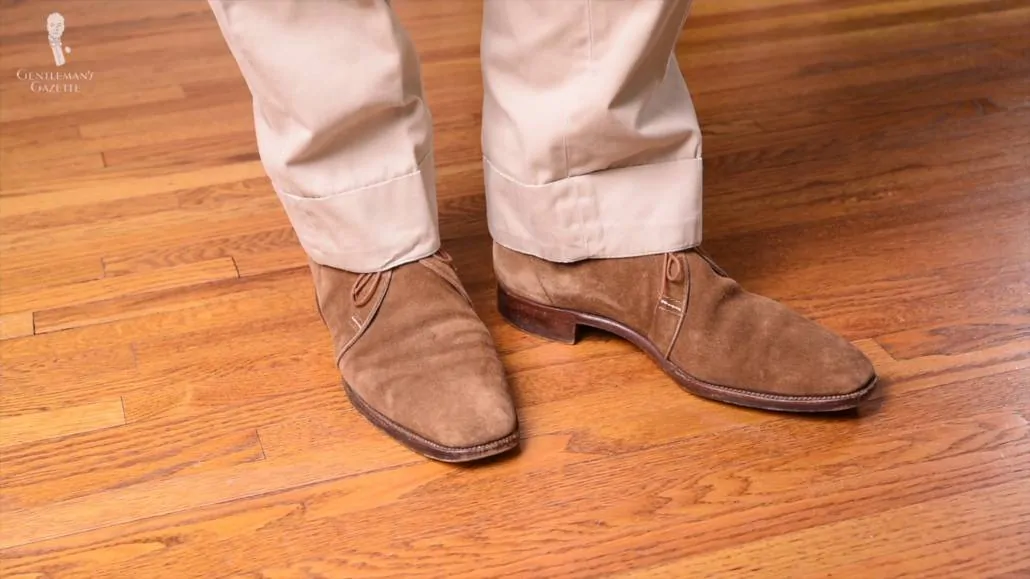
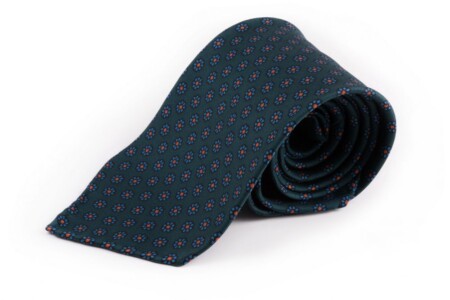
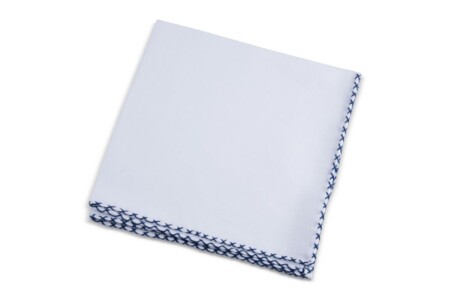
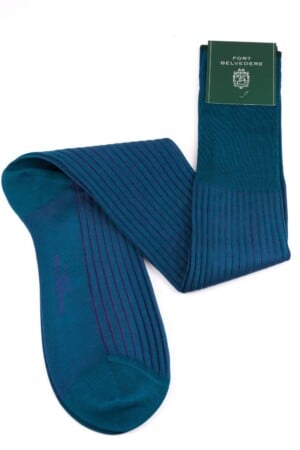
I’d like to add another point, which is sort of covered in fashion trends and slim fit silhouettes but not quite the same thing: extreme tapers. Apart from jeans and odd slacks or dress pants, which are becoming less commonly worn in an ultra casual society, most trousers are that taper cut like the joggers Nathan has been shown wearing (for what the presenters at GG wear at home and what not to wear on dates, to weddings, etc) meaning elasticised cuffs instead of turn-ups.
I have eight good reasons for wearing cuffed trousers, both dress, and casual. All eight pairs of my Brooks Brothers trousers in my closet are made from Loro Piana fabric from Italy. These beauties aren’t going anywhere!
Cuffs are a sartorial must with everyday suits. Only jeans and tuxedo trousers are to remain without a cuff. Proportion is paramount and tend to see a rebirth of the 2” cuff. My go to is 2” cuff. Thanks for the article.
Love the color of shoes at 2:45.
Cuffs on trousers but not on chino and jeans.
1 3/8″ cuff with a light break.
Cuffs always … you will be noticed!
I think the decline of cuffs came along with the extra slim style of suits. Personally, I find them ridiculous, especially with the jacket that doesn’t cover your backside. It looks like you pulled your clothes out of your kid brother’s or your son’s closet.
Call me old fashioned, but if I’m getting a new suit its double breasted with pleated and cuffed slacks. Just like most of my other suits. Class never goes out of style.
OK, I haven’t been able to read the entire article at the moment, but I had to write immediately that any “dress slacks” I buy must have cuffs. Either with a suit or by themselves. Cuffs I feel is what makes the difference between just casual pants and slacks that make you feel like an elegant gentleman! No more needs to be said.
I do not believe any gentleman should not participate in casual Fridays. Wear a tie! Act, no, be more professional. The decline of manors at the table I.E.eating dinner with a cellphone out is the same as a man working in an office without a tie. And cuffs on your trousers moves you up a notch.
I’m a bit confused by the wording of your comment. Are you saying you Don’t think gentlemen should participate in casual Friday? Or do you think they should?
PS: I always liked causal Friday. Even though where I work doesn’t have a formal dress code, I wear a suit Mon-Thursday anyway. But on Friday, I enjoy not wearing a tie or dress shirt, and just wearing a polo shirt or a flannel shirt with a blazer or sport coat. It feels comfortable, and stylish!
I wear cuffs on all my suits and dress trousers. No cuffs on the tux. No cuffs on everyday pants, although I do like cuffs on corduroys as I think it gives a better fall for those heavier materials.
False dichotomy here. During my sartorial lifetime, cuffs are in, cuffs are out. I see men wearing cuffs and others not wearing cuffs. In my closet, I have both. I have one bespoke suit with two pairs of trousers. One with cuffs, the other without. I wear both. I don’t like the looks of 2inch + cuffs. One has to be careful with light weight trousers. Cuffs will make them swing like a pendulum when walking.
Always food for thought.
I’ve never stopped putting cuffs on my pants, other than jeans, though I’ve always used 1″-1-1/4″ at most. More is just ungainly. All of your reasons, Sven, for using cuffs are good ones. When fabrics became lighter in the 80s, and pants were wider, they really needed the weight at the hem to make the pant legs drape well. That for me has always been the main reason for using them, whether on dress pants, heavier tweeds, or khaki pants.
More recently, with the trimmer silhouettes that have been in vogue, moderate cuffs still provide definition at the hem, whether the pants are creased, or not, and help the hem fit better over the popular boot styles when longer, or when worn shorter and showing some ankle. Hence, all of the multiple turn-ups on jeans, too. My own decisions are largely determined by the weight of the fabric, such that I personally find stiffer “stovepipe” jeans better left as they are and just worn a bit longer over chelsea, laced-up or jodhpur boots, etc. Wider leg jeans, which are usually lighter fabric, too, need, not cuffs, but a wider hem (1″+) for them to hang properly and sit well over top of shoes or boots.
As for why they went out of fashion, having grown up during the 70s, they were at times put onto flare pants, but that was a bit harder to make work. Otherwise, as you say, the cleaner silhouettes of the 60s, along with still slightly more body in the fabrics, meant one could dispense with them for aesthetic reasons and still have a pant that hung and creased well. As fabrics acquired more lightness and drape, cuffs haven’t come back, though they took a turn in the 80s, but current fabrics make much more sense when cut into much wider leg “palazzo”-style pants like the last few years, though that also seems to be quickly going away again.
I always liked the look of cuffed pants, and all my cuffs came with pleats. But my mom has some strange odd vendetta against them…
PS: It’s unrelated, but does anyone know where to find cheap formal striped trousers in the US? Or online?Whenever I look it up, I only really find suit pants. If anyone could tell me where to find Formal Striped Trousers, I’d be very thankful.